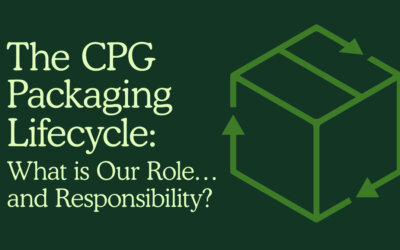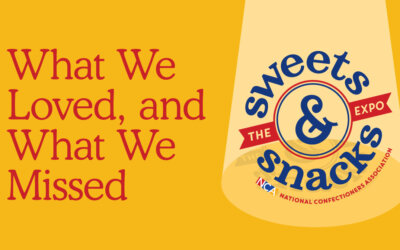Better-For-You Brands
Health-Conscious Revolution:
5 Emerging Better-for-You
Packaging Design Trends

Tyler Terrell
Sr. Designer
June 27, 2023
As packaging junkies, we’re deeply familiar with the better-for-you (BFY) market: an ever-expanding sea of food, drinks, and supplements that promise better health, improved well-being, free-from or natural/organic ingredients, and often, a mission to make the world a better place, one bite or sip at a time.
With 53% of U.S. consumers citing health benefits as a leading indicator of a product’s value, BFY foods and drinks can be incredibly compelling, even if their claims aren’t *entirely proven or FDA-approved. Besides, who can resist packaging that looks as good as With Co? These cocktail mixers are made with fresh juice and real botanicals, according to the website. The packaging aesthetic borrows from the wellness category with plenty of white, elegant typography, and a refined composition that reads premium.
Being human and therefore enamored with shiny objects, we’re often so enticed by a product’s packaging that we’re willing to risk an unpleasant taste experience, although that will certainly not lead to repeat purchases. Knowing this, we took a deep dive into the world of BFY and identified 5 of the biggest packaging design trends to watch (read to the end to see some of our favorite brands in the space, too).
Trend 1. White, white everywhere
White has long been used in packaging to represent pure, simple, and unadulterated ingredients. It imparts a “lightened” look that conveys honesty in claims and messaging. What could be more to the point than black text on a white background? When BFY brands use white, they’re telling you that “what you see is what you get.”
Trend 2. Vibrant yet clean
Whether or not a brand is using white to communicate in the category, paring back design elements is another strategy that allows key product imagery and nutritional claims to take center stage.
To enhance this “reduced” look, bold color often washes the entire package, creating effective blocking at shelf. And while subtle pattern and illustration work can be found in the category, overall, less communicates more in BFY products.
Trend 3. Show me the benefits
When shopping, BFY consumers are looking for their specific benefits. For some, it could be a catchall superfood with everything they need. Others might be keeping an eye out for one key ingredient substitute (like sugar or gluten).
Because of this, the BFY market is incredibly fragmented. Certain categories and products see a plethora of benefits and bona fides, while others focus on making one claim the hero. Even if other benefits could be listed, these focused brands are modest in their claims and reserve them for side or back panel communication.
Both approaches strive for the same goal: fitting into a consumer’s chosen diet.
Trend 4. What’s in a (plant-based) name?
Plant-based products can now be found in nearly every category. From dairy to household cleaners, alternative products for different lifestyles are becoming a mainstay. It’s worth looking at how they’re promoting their plant origins.
Many BFY brands own their plant-based origins and demand attention with wacky and inventive names, which are often a play upon the product being emulated.
Often, brands using this proclamative style lead with a negative word. “No,” “Un-,” and “Nah” are some of the most common. Others take a more positive spin, using terms like “Only,” “Just,” and “Wholly.”
Trend 5. Sensible Claims
Consumers are often shopping for what’s familiar. While some of the bolder brands are unmistakable in their claims, recognizable products can help ease a consumer into a new diet or lifestyle change.
The brands below present the product first, only referencing their dietary claims in descriptor phrasing or benefit callouts. This presentation can help consumers navigate the marketplace and prime them with the language of the category—important since, according to Mintel, 51% of consumers agree that labels on food and drinks should be clearer (47% say they are confused about which ingredients are good or bad).
The best BFY packaging designs today
We’ve rounded up some of our favorite BFY packaging designs at the moment, assessing them by color strategy, identity, claims messaging, and appetite appeal, among other brand elements. Which are your favorites?
Smart Sweets
Smart Sweets wins points for its youthful color combinations and easy-to-navigate claims. It just feels…sweet.
Made Good
Made Good, known for its allergen-free, kid-friendly varieties, is living up to the mission its name implies—transparency—and building equity around its brandmark.
Yasso
Yasso, the dipped Greek yogurt bars, maximizes the “drip” effect reflective of its product, as well as a bold, disruptive color palette in the freezer section.
Zevia
We were super excited to see Zevia’s rebrand this year. The design language borrows from the rising non-alcoholic beverage category, and the company is committing to sustainability by replacing its plastic 6-ring with a cardboard version.
Olipop
What’s not to love about Olipop? The cola—or rather, “tonic”—brand is innovating on flavor and ingredients, yet the packaging is giving retro in the best way.
Better-for-you packaging design is setting the trends
With “flavor first” presentations, elegant or irreverent icon and font use, and a connection between brand mission and brand expression (like sustainable packaging for vegan and vegetarian foods), the better-for-you market is generating design trends that the big guys are already mimicking. It’ll be interesting to see how technology like scannable packaging can help consumers understand the sometimes-unfamiliar benefits of BFY products better, too. No matter what, we’ll be watching (and shopping) this space closely.
More Insights
The CPG Packaging Lifecycle: What is Our Role…and Responsibility?
How would packaging design change if we cared as much about its afterlife as we do its shelf impact? How can we apply creativity, insight, and practicality to every stage of a package’s lifecycle? And what might we discover when we follow our designs beyond the shelf and into the systems that give them a second life?
What we Loved, and What we Missed at Sweets and Snacks 2025
At Sweets & Snacks 2025, flavor innovation stole the show, but something was missing. While branding dazzled, structural packaging design barely made a ripple. We’re diving into why that matters and where brands could be pushing the boundaries. Curious what was overlooked? Let’s unpack it.
It’s 2025. This CPG Packaging Deserves a Re-Design
From impossible-to-open seals to wasteful single-use plastics, we asked our team what packaging frustrations they’d love to fix this year. The answers? Smarter resealability, better portioning, and sustainability upgrades galore. See what made the list—did your biggest packaging pet peeve make the cut?



